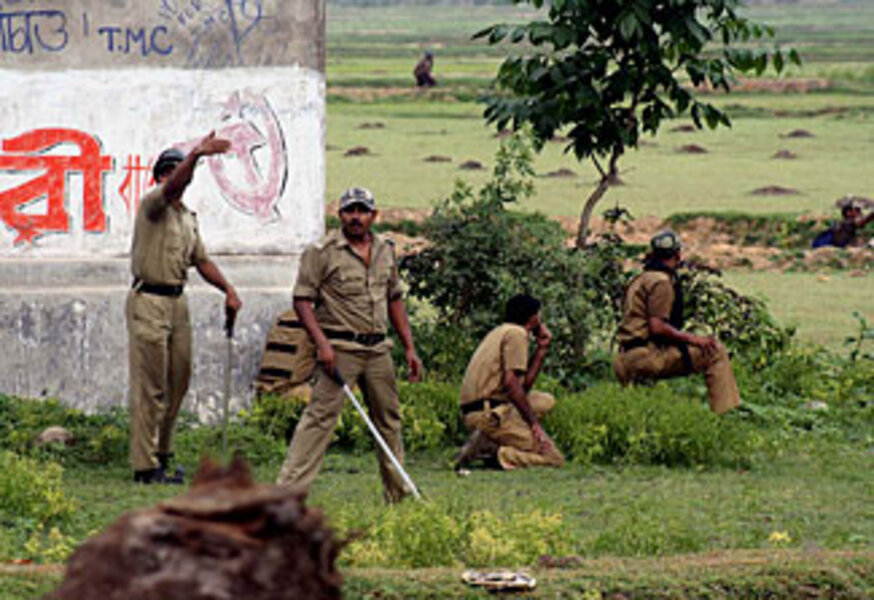India's longtime battle with Maoist rebels heats up
Loading...
| New Delhi
Eleven police officers were killed in an ambush by Maoist rebels in the central Indian state of Chhattisgarh Sunday, as fears grow that the decades-old revolutionary movement is gaining ground in more parts of the country.
Seven rebels were killed in the attack launched by the rebels, also known as Naxalites, after the West Bengal village of Naxalbari where in 1967 poor villagers rose up against their landlords.
Since then, the movement, which claims to fight for India's poorest, has spread across strips of eastern, central, and southern India. Naxalites now operate in at least 11 of the country's 28 states and are thought to boast some 22,000 fighters.
On Monday, the central government warned that five states in central and eastern India were under threat of attacks during a two-day strike called by the rebels.
That strike was called to protest against a government offensive in Lalgarh, a Maoist-seized jungle enclave in West Bengal. Last week, after the local police fled, the state government sent 1,000 paramilitary forces to Lalgarh where they are still fighting to commandeer hundreds of villages.
Many rural poor to recruit
Here, as in other areas affected by Naxalism, the rebels have set out to attract the poor and alienated – "any group that has a grievance," says Ajay Sahni, a terrorism expert at the Institute for Conflict Management in New Delhi.
In India, where hundreds of millions survive on less than a dollar a day and 70 percent of the population lives in rural areas largely bypassed by the country's recent economic boom, there is no shortage of such groups.
Geography also plays its part. The areas of West Bengal into which the Maoists are making inroads are close to the eastern states of Orissa, Jharkland, and Chhattisgarh, where the Maoist presence is heaviest.
There are new concerns, too, that the rebels, who have tended to focus their operations on rural areas, are attacking areas close to cities.
Mr. Sahni says the rebels are also stepping up a campaign to recruit more Indians to their cause. In Delhi, where the Maoists have previously tried to appeal to university students, they are now seeking to attract small retailers who have been displaced by multinational companies and urban planning laws, he says.
'Highly affected' areas still limited
Analysts caution against exaggerating the threat, however. Of India's 630 districts, Maoists are today operational in 220, compared to 56 in 2000, says Sahni.
"But it's important to realize that only 55 or 56 districts could be described as highly affected," he says. "We must not deny the risk, but there's a tendency with these sorts of events to suddenly think it's all suddenly falling apart."
India's central government, meanwhile, has said tackling Naxalism is a priority. Prime Minister Manmohan Singh has described the movement as one of the gravest security threats to India. After his Congress-led government was re-elected last month it reiterated that view.
"Terrorism, Naxalite violence, and insurgency in the northeast are the key challenges before the country," Home Minister Palaniappan Chidambaram said. He promised "coordinated and tough" action against the rebels.





